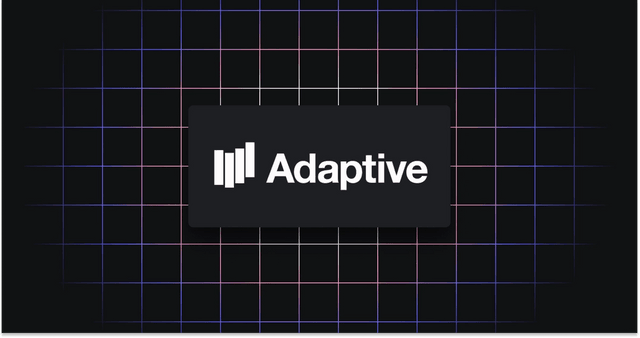August 18, 2021
From Front to Back: How OpenFin and Adaptive Enable the Future of Capital Markets Technology

Ask any capital markets technologist how their world has changed in recent years and they’re sure to mention an overarching shift: Web development has become the standard for building front-end user interfaces. While this pivot to web has made it easier and faster to deploy applications while reducing costs, it also comes with its own set of challenges.
One pain point is that while web apps are easy to deploy, they do not lend themselves to an elegant user experience as readily as their native counterparts. At OpenFin, it has long been our mission to solve for this – and by deploying our operating system, which enables windowing, interoperability and other capabilities designed to empower end users, firms can provide tools that offer full functionality and efficiency while eliminating the legacy technologies that have historically made these so hard to deliver.
But while innovation has altered the industry’s approach to the user interface, there hasn’t been as much movement on the back end. Thanks to the modeling complexity and latency concerns, capital markets trading infrastructure has been underserved in terms of large open-source contributions from the Facebooks and Googles of the world, as well as low code/no code initiatives.
Enter Adaptive Financial Consulting, which builds trading systems for its clients. Differentiation through digital channels is a key priority for all market participants today, so a bespoke solution built by Adaptive and enabled and delivered through OpenFin adds up to success and resilience now and in the future.
On a recent webinar – “Your Solution, Delivered: How Adaptive Builds Trading Platforms” – Adaptive, in partnership with OpenFin, explained its approach, highlighting several pillars that enable its business and fuel efficiencies for capital markets firms. Adaptive, through its technical accelerators, greatly reduces the risk and cost of building a bespoke trading solution, as well as increasing time to market. This enables far cheaper experimentation and innovation in technology for participants within the capital markets.
One topic of discussion was Adaptive’s model-driven approach. This involves using a simple programming language, or domain-specific language (DSL), to represent the elements of the business domain, enabling developers to focus on the essential complexities of the business logic. For Adaptive, this approach enables the generation of contracts between the OpenFin-powered user interface and the server that provides it with relevant data.
“By specifying the contract between the client and the server at the beginning of the sprint, the client and server development teams can now work in isolation throughout, developing against the contracts emitted by the model,” said Matt Barrett, CEO at Adaptive. “At the end of the sprint, the two teams can integrate their code bases, and a huge raft of integration bugs and misunderstandings between client and server code are prevented before they happen.”
In addition, the combination of OpenFin and Adaptive speeds time to market by accelerating testing, which often morphs into a lengthy and cumbersome process as platforms become increasingly feature-rich over time. By providing a stable boundary between the app and the outside world from the start of a project, Adaptive can implement end-to-end black-box testing from the outside in.
Adaptive and OpenFin have also made significant strides in increasing developer productivity, another major trend. While modern web development environments are the most advanced available, they are only slowly moving to first-class support for stream-first development, a must for those writing real-time trading applications for capital markets. In this environment, the single-response paradigm of HTTP is not the right fit. Adaptive solves for this by emitting a range of client-server interaction patterns via its DSL.
Adaptive also helps to ensure the multi-year development efforts that complex trading systems often require remain on-track. Adaptive generates client-side services that can be called by UI code to easily access back-end-provided data in real time. This means that at development time, engineers can connect UI components to client-side stubs that provide test data to drive the UI through different states, which is a huge win for productivity and testability over time. In both of these instances, OpenFin provides the adapters and APIs needed to build efficiently and see through the most difficult projects.
Above all, Adaptive enables flexibility in technology choice. “The HTML5 framework you choose for your UI today will more than likely be out of date in a few years’ time,” said Barrett. “This is why the services we generate on the client side are un-opinionated about what web development framework you use on top of them. This means that UI components implemented in different technologies can all live on top of our generated services.”
This points to one of the fundamental challenges of building and deploying software in a landscape that contains so much innovation. No matter how much time and thought you put into a system, it won’t be long before it becomes obsolete. In this environment, how you build is just as important as what you build. Just as Adaptive supports UI components implemented in different technologies, OpenFin enables the seamless interaction of all apps on the desktop, whether proprietary or from third parties, so no matter the workflow challenges that must be addressed, firms have a future-proof roadmap to solving them.
To survive rapidly changing technology landscape – and to weather pandemic-related disruption and support the future of work – capital markets firms must be aggressive in pursuing radical new development strategies. By delivering accelerators that enable bespoke, targeted solutions that can get into production quickly, Adaptive is making it easier to achieve this reality on the back end. It’s all in service of a seamless desktop experience powered by OpenFin, which delivers a native experience, deployment flexibility and workflows that maximize productivity.
Want to learn more about how OpenFin works with partners like Adaptive to enable the future of work? Get in touch.
Enjoyed this post? Share it!
Related Posts
All Posts ->
Featured
Why you can’t afford to miss FinJS @ home
Webinar

Featured
Introducing OpenFin Layouts
Webinar